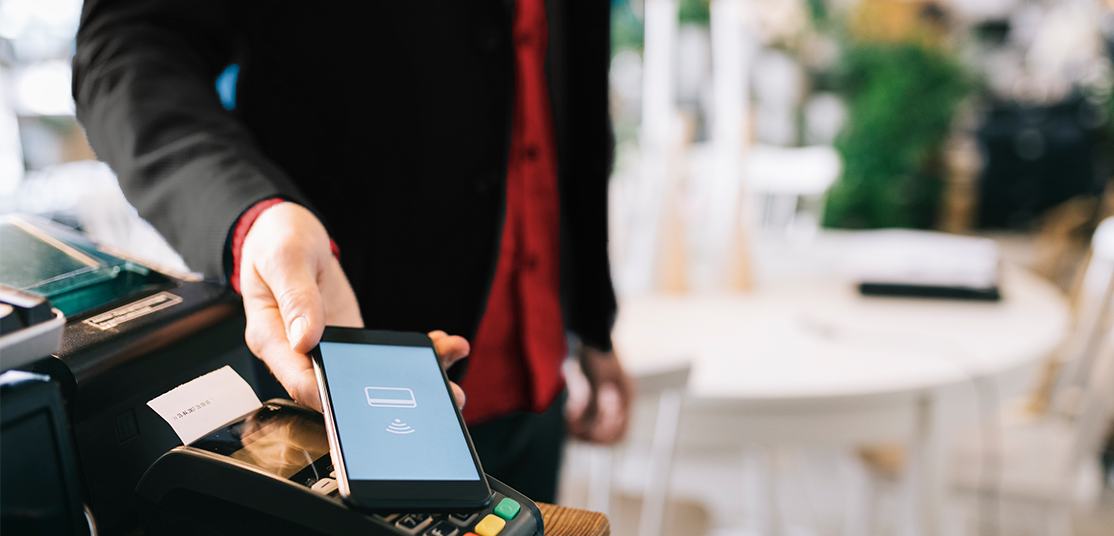Financial Tips for 2020 |
 |
Security: Keep Yourself, and Your Finances, Safe |
|
As part of our 20 Financial Tips for 2020 series, we want to make sure you have the tips and tools to keep yourself, and your finances, safe. |
| 1. Keep Your Private Information, Private |
|
We never think we will become a victim of fraud until it’s too late. That’s why, it is important to always be cautious when you are contacted and prompted for personal information. A common fraud tactic is to impersonate a financial representative and make-up a scenario, such as there being fraud on your account, to encourage you to release private information. Since your financial institution may indeed contact you, it is important to distinguish what they will not ask you for. At Wheelhouse Credit Union, we will never call you and ask you for:
If you are unsure of the caller’s identity, you should always hang up the phone and contact the institution directly. It is important to note, fraudsters may be using ‘line-tapping’ to stay connected after you hang up. This may allow them to remain on the line during your next call, or redirect it back to them. However, it is believed that line-tapping only remains in effect for several minutes after the initial call. Therefore, we recommend you wait 5 to 10 minutes before calling the institution directly, or call immediately from another line. |
| 2. Set Strong Passwords or Use an Alternative Method. |
|
This is SO important, we cannot stress it enough. Here are a few dos and don’ts when setting up your passwords:
Do you have a hard time remember passwords? Consider using a secure password management system such as Bitwarden or a tool such as a YubiKey. |
| 3. Protect Your Personal Identification Number (PIN) |
|
| 4. Use a Digital Wallet |
|
Generally speaking, digital wallet applications are better secured than your physical credit or debit card. This is because the digital wallet app provides a unique, one-time code whenever you make a purchase. This code can only be used for that specific purchase, which means if a hacker got the code, they wouldn’t be able to use it. By using a code, it also eliminates the need for card details to be transferred, preventing an employee and/or a potential hacker from receiving your card details. To learn more about the security of digital wallets, you can check out this article on DefendingDigital. |
| 5. Be Wary of Public WiFi |
|
Public WiFi is both convenient and dangerous. The number one tip to remember when you are connected to public WiFi is to avoid making any financial transactions or logging into any financial account. You may want to consider using a Virtual Private Network (VPN) for an extra layer of security when using public WiFi. You can learn more about VPNs and see a provider comparison here. |
|
For more information on security and common fraud tactics, visit WheelhouseCU.com/security. |
Financial Tips
Financial Tips for 2020 |
 |
Top 5 Money Management Tips |
|
We are kicking off our 20 Financial Tips for 2020 with our Top 5 Money Management Tips! Look for our next set of tips on Savings in the coming weeks. |
| 1. Download Your Financial Institutions’ Mobile Apps |
|
One of the simplest ways to keep track of your finances is to make use of your financial institutions’ mobile applications. Most applications, including our own, give you access to your finances 24/7 and make it easy to manage your money. Use your app to transfer money, deposit a check, block a card, pay bills, set a travel notice, apply for a loan, and so much more. If you haven’t already, we encourage you to start 2020 with a quick download of our Mobile App and begin managing your finances more effectively. |
| 2. Have an Overview of all of Your Accounts in One Place |
|
Continuing with the benefits of mobile applications, look for one that allows you to connect all of your accounts (checking, savings, loans, and more) across many financial institutions to see your overall assets and expenses. You may also want to set budgets for various categories and get alerts when you exceed them. A budget at the tip of your fingertips, anywhere you go; does it get much better than that? Our Wheelhouse Credit Union App allows you to do all of this and more. If you are looking for an alternative, Mint is another robust and easy-to-use tool. |
| 3. Expect the Unexpected |
|
Something that can easily throw off your groove and put you in a bad mood is an unexpected expense; and honestly, the only way to avoid this is to plan for them. Consider stashing away a little money every paycheck to cover expenses such as vehicle maintenance, the birthday you nearly forgot about, an annoying parking ticket, or your pets’ sudden vet visit. Be sure to keep this money separate from your regular savings account. |
| 4. Reassess Your Expenses Every Quarter |
|
It is so easy to subscribe to a new service or set up an automatic payment and then forget all about it. Although the monthly payment may seem so small and insignificant, you would be surprised how quickly it adds up. Think about a $25 subscription, in a year, that is $300 that just disappeared! Imagine that times a number of different subscriptions? You could easily be kissing your hard earned money goodbye without a thought. |
| 5. Budget for the Fun Stuff |
|
We all know the feeling of seeing that beautiful dollar amount on payday and then feeling the urge to do something fun with it. But of course, we are responsible, so we resist the urge and pay our bills first. Then, sad sigh, as that number shrinks immensely. Oh, but wait! Is that a bit of cash left over? Indeed it is. We can just spend it all, right? Wrong. Give yourself a budget of how much you can spend on a night out, a dinner date, or that item that caught your eye at the mall. The rest of it, stash away in a secondary savings account. You may be pleasantly surprised at the end of the year when you saved up a nice chunk of change and can either go big or keep investing! |

